Bold and beautiful, hardy catalpa takes a big commitment of space and energy to maintain, but the payoff is worth it. Large, fragrant flowers cover the tree in early summer, and the big heart-shaped leaves provide dense, cooling shade. Winter interest? You've got it: Long brown pods cling to the branches and look like multiple exclamation points against a silhouette of heavy branches. Best of all, this native tree is a problem solver, tolerant of air pollution, flood and drought.
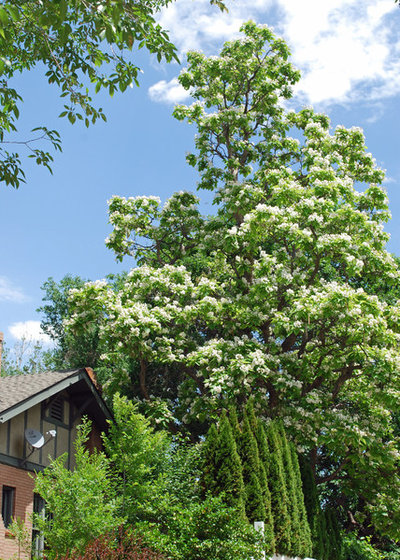
Jocelyn H. Chilvers
Botanical name: Catalpa speciosaCommon names: Hardy catalpa, Western catalpa, Northern catalpa, cigar tree
(Southern Catalpa, native to the southeastern U.S., is
Catalpa bignoides)
Origin: Native to the midwestern United States
Where it will grow: Hardy to -30 degrees Fahrenheit (USDA climate zones 4 to 8). Find your zone
Elevation range: To 7,000 feet
Water requirement: Moderate, but the plant is highly adaptable
Light requirement: Full sun to partial shade
Mature size: 40 to 60 feet tall and 30 to 50 feet wide
Benefits and tolerances: Showy flowers, foliage and seedpods; adaptable to a wide variety of soil types and moisture availability
Seasonal interest: Flowers in late May or June, followed by 8- to 20-inch-long, bean-like seedpods that ripen to dark brown and persist through winter. No fall foliage color.
When to plant: Spring to fall
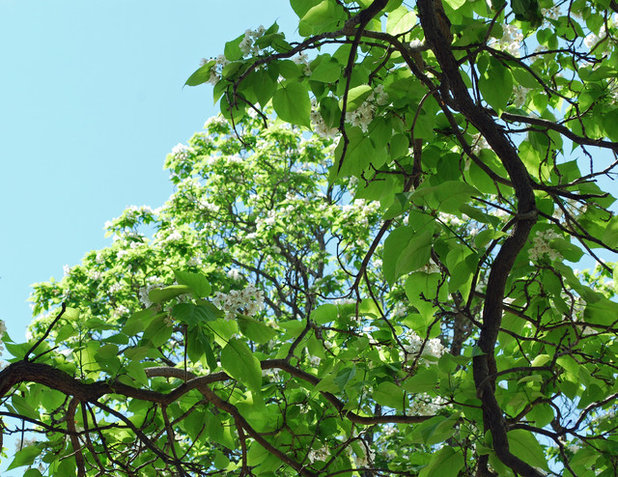
Jocelyn H. Chilvers
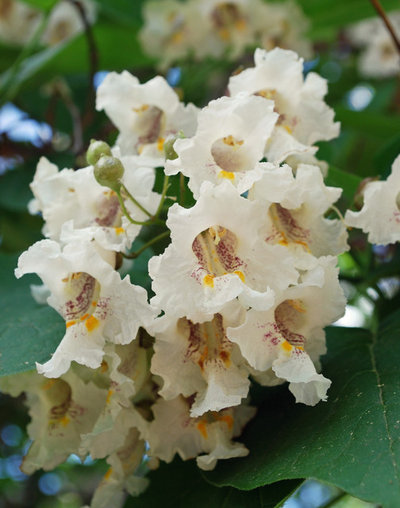
Jocelyn H. Chilvers
Distinguishing traits. Hardy catalpa has a tall, narrow form that broadens with age and is very coarse. The wood is somewhat brittle and may suffer storm damage.
White bell-shaped flowers, about 2 inches long, have ruffled edges and throats colored with yellow stripes and purple dots. The flowers appear in large clusters (panicles) that enhance their visual impact.
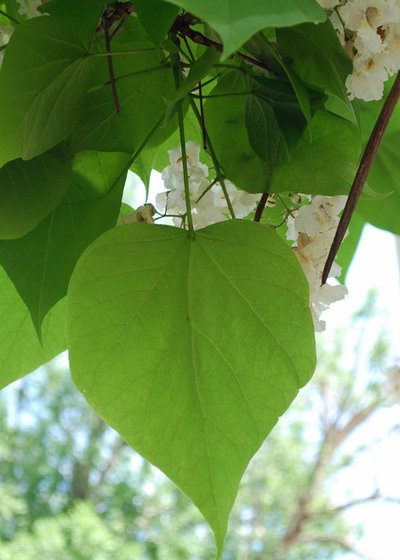
Jocelyn H. Chilvers
Extremely large (6- to 12-inch-long) vibrant green foliage may suffer damage and become tattered from high winds and hail.
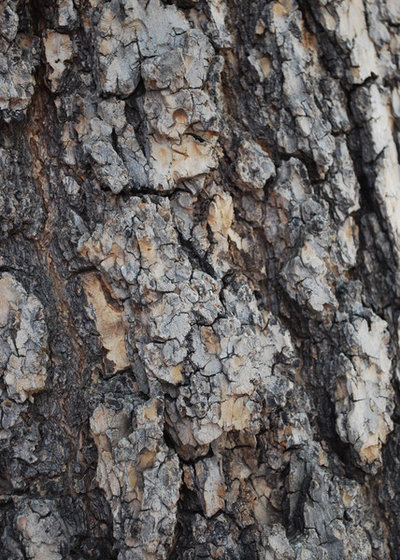
Jocelyn H. Chilvers
The mature bark is thick and heavily furrowed, adding to the overall coarse texture of the tree.
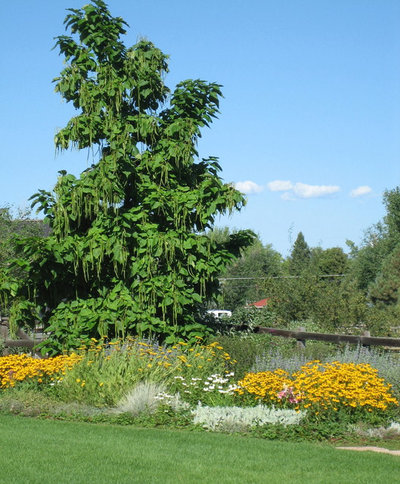
Kingfisher Landscape
How to use it. This photo is a great example of hardy catalpa used in a large-scale landscape setting (note the green "bean" pods) with big masses of perennials.
Flowering shrubs, small evergreens and ornamental grasses with low to moderate moisture needs would all be suitable companion plants. Think lilacs (
Syringa spp), viburnums (
Viburnum spp), spirea (
Spirea spp), dwarf blue spruce (
Picea pungens 'R.H. Montgomery'), peonies (
Paeonia spp), tall stonecrop (
Sedum spectabile), black-eyed Susan (
Rudbekia spp) and lady's mantle (
Alchemilla mollis).
As always, when the tree matures, the light quality around its base will change, and a new plant palette will be needed.
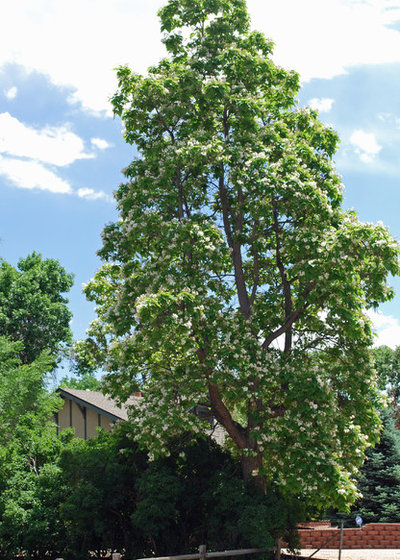
Jocelyn H. Chilvers
Planting notes. Hardy catalpa needs plenty of room to grow, so it's best to locate it on a large property. It's extremely adaptable and will tolerate high alkaline soils, heavy clay and wet, moist or dry soils. This is a great tree for difficult growing conditions, even areas that are prone to occasional flooding or are hot and dry. Plant it in full sun.
Hardy catalpa requires regular maintenance; you'll need to clear away spent flower debris in the summer, leaves in autumn and seedpods in late winter.
Unfortunately, hardy catalpa may be invasive in the right growing conditions, so be sure to check your region before planting.
Fun fact: The wood from this tree has a beautiful grain and is used for furniture, interior trim and cabinetry.





